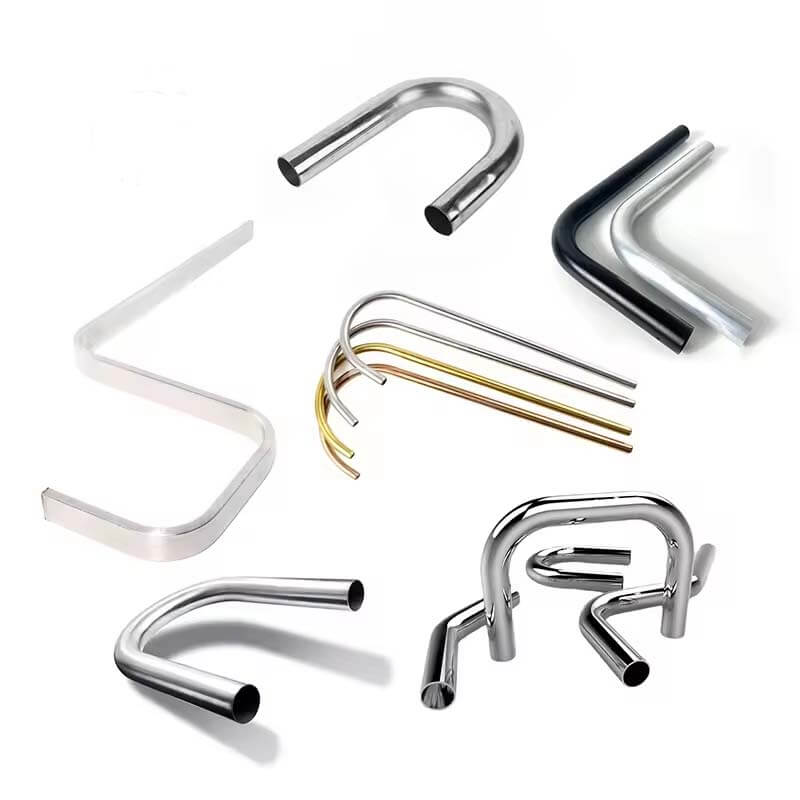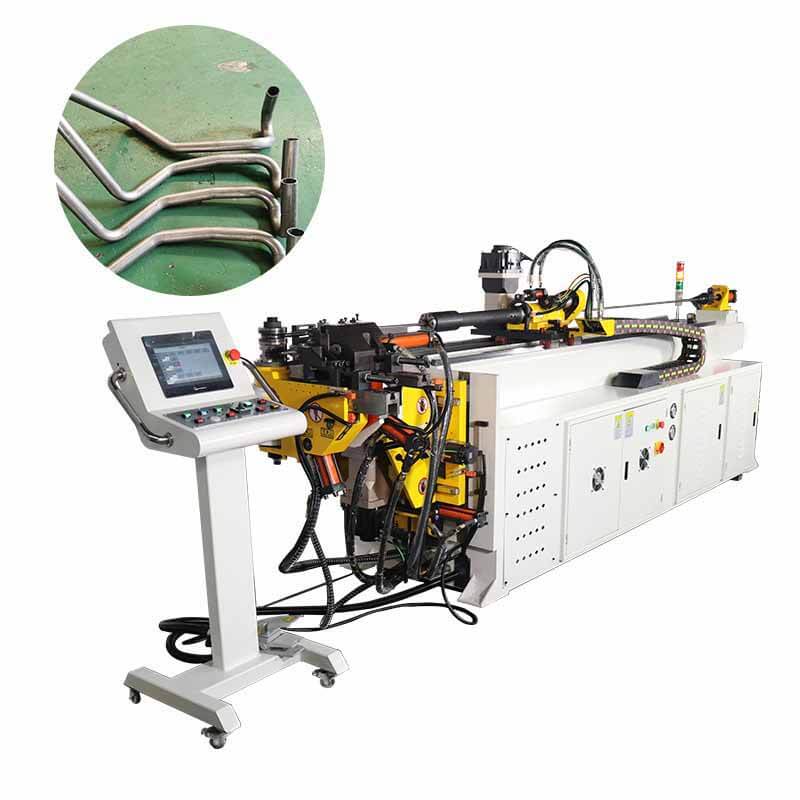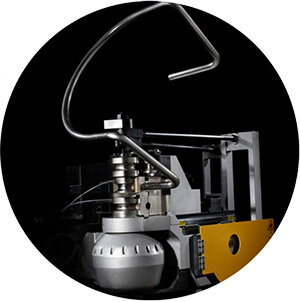Thing You Must Know about Stainless Steel Tube Bending
We need to separately address the stainless steel tube bending due to its unique properties. If you’re interested in the characteristics of stainless steel pipes, how to bend them, and what equipment to use, this article will provide you with all the information you need.

Why Bending Stainless Steel Tubing?
Bending stainless steel tubing has replaced many other metal tube materials, due to the feature of stainless steel tube, that is:
Corrosion Resistance: Stainless steel can resist corrosion from oxidation, acid, alkali, and other chemical substances, and is suitable for various harsh environments.
High Strength: Stainless steel has very high strength and can withstand high pressure and heavy loads, making it suitable for situations where structural stability is required.
High Temperature Resistance: Stainless steel can maintain structural stability in high-temperature environments and is not easily deformed or loses function.
Hygiene: The surface of stainless steel is smooth, easy to clean, and not easy to breed bacteria.
Good Mechanical Properties: Stainless steel has excellent mechanical properties, including elasticity, plasticity, and toughness, making it suitable for a variety of engineering and manufacturing applications.
Aesthetics: Stainless steel has a shiny surface and a modern feel.
So, this is why the stainless steel bent pipes are widely used in construction, automotive, aerospace, marine, chemical processing, oil and gas, food processing, pharmaceuticals, and architecture.
Feature Comparison Between Stainless Steel Tube and Other Metal Tube
Let us take a look at the stainless steel tube feature and see its uniqueness with other metal tubes.
Corrosion Resistance Comparison
Carbon Steel Tube: Carbon steel tubes are more susceptible to corrosion because the main raw materials of carbon steel are iron and carbon. The iron in carbon steel reacts with oxygen and water to produce iron oxide (also called rust), which in turn causes corrosion of the steel. Therefore, carbon steel pipes have poor corrosion resistance.
Stainless Steel Tube: The reason why stainless steel is corrosion-resistant may be that it contains alloy elements such as chromium and nickel, but basically contains no carbon elements. In fact, scientific research shows that the real reason why stainless steel is resistant to corrosion is that the chromium element reacts with oxygen to form a dense chromium oxide film on the surface of the stainless steel. This feature makes stainless steel a very good product.
Aluminum Tube: When the surface of aluminum is exposed to the atmosphere, it will immediately form an invisible thin oxide film to prevent further oxidation of the metal. Aluminum has a certain corrosion resistance, but the corrosion resistance of aluminum is not as good as that of stainless steel.
Copper Tube: Copper pipes have a certain degree of corrosion resistance, but they cannot be exposed to acidic environments and are very susceptible to corrosion.
Strength Comparison
Carbon Steel Tube: 50,000 Psi
Stainless Steel Tube (304): 40,000 Psi
Aluminum Tube (6061): 40,000 Psi
Copper Tube: 28,000 Psi
Hardness Comparison (Rockwell Hardness B Scale)
Carbon Steel Tube: 74 HRC
Stainless Steel Tube (304): 88 HRC
Aluminum Tube (6061): 60 HRC
Copper Tube: 10 HRC
Melting Point Comparison
Carbon Steel Tube: 1400℃
Stainless Steel Tube: 1400℃
Aluminum Tube: 660℃
Copper Tube: 1000℃

Types of Stainless Steel Tubing Bender
Stainless steel pipes are widely used in various industries due to their good corrosion resistance and high strength. Many times, they are not used directly but need to be shaped or bent into various shapes to adapt to specific application scenarios. Let’s take a look at different types of stainless steel tubing bender.
Pipe Roller Bender
The pipe roller bender is normally used to bend the stainless steel tube and pipe with a large bending radius. This equipment normally has 3 rollers, 7 rollers, or 9 rollers
Rotary Draw Bender
Clamp the stainless steel tube or pipe and form the shape around the bending die until your desired shape is achieved.
Mandrel Tube Bender
Mandrel tube bender is the best stainless steel pipe bender we think for mass production with precise bending. Mandrel pipe bending is using a mandrel insert into the pipe and then clamping the pipe between the clamping die and bending die. In this way, you can greatly reduce the risk of pipe collapse and wrinkling.
Compression Tube Bender
A compression tube bender is used to bend some simple bends, the stainless steel tube or pipe is bending around the stationary die till your desired shape. This equipment is not suitable for tight radius bends.
Ram Tube Bender
Ram tube bender is a very simple and easy-to-use tube bender, very close to manual bender, but uses a hydraulic ram to bend stainless steel tube. It is portable and can move to any place where you want to bend the tube.
Key Considerations When Choosing Stainless Tube Bender
As we can see above, the different features of stainless steel tubes, and there any a few types of stainless steel tubing benders in the market. You need to pay attention to the below factors when choosing stainless tube bender.
Bend Radius
We always recommend to our customers that when designing the tube bends, it is better that the bend radius is 1.5 times of tube diameter. Most stainless steel bending requires a tight bending radius, so it is better to use a mandrel bending machine.
Yield Strength
The higher the yield strength of a material, the greater its springback, as seen in stainless steel tubing. Therefore, before bending stainless steel tubing, you must determine the expected strain.
Stainless Steel Tube Thickness
When bending metal tubing, the thicker the material, the greater the bending force required. Stainless steel tubing presents a challenge due to its inherent hardness, which increases difficulty, especially with thicker walls. However, even thin-walled stainless steel poses challenges during bending due to its hardness, making it prone to deformation or collapse.
Welded Stainless Steel Tube vs Extruded Stainless Steel Tube
Both seamless and seamed stainless steel pipes can be bent. Seamed stainless steel tube is used for large diameter applications, while seamless stainless steel tube is used to bend with tight radius.
Application
There are a few types of stainless steel tubing benders, you can choose the proper bending machine depending on your needs. If you need to mass production of stainless steel tube bending, you need to use a mandrel bending machine. If you need to bend the stainless steel tube with small quantities or small projects, a ram tube bender or compression tube bender is enough.
How to Bend Stainless Steel Tubing?
There are a few pieces of equipment used to bend stainless steel tubes, each different piece of equipment has a different bending procedure. Based on precisely tube bending request, we still think the mandrel bending is the best stainless steel tubing bender.
You may also interested in:
How to choose proper copper tube bender?

Denis Lau
Denis Lau has 20 years of work experience in the metal processing industry. His major in university was mechanical engineering, and after graduation, he started from the bottom of the workshop, gaining extensive hands-on professional experience and the ability to tackle challenges from various industries.


